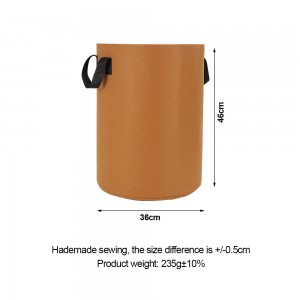In the face of increasing natural disasters and climate – related challenges, root control bags are emerging as a vital tool in building resilient agricultural systems. These versatile bags offer unique advantages that can help farmers adapt to harsh conditions and safeguard their crops.
During floods, traditional field – grown crops often suffer severe damage due to waterlogging. Root control bags, with their excellent drainage properties, provide a solution. The breathable fabric allows excess water to quickly drain away, preventing the roots from being submerged for extended periods. In a recent flood – affected region, farmers who used root control bags to grow vegetables reported a 40% higher survival rate of their crops compared to those using conventional planting methods.
Similarly, in arid and drought – prone areas, root control bags can enhance water – use efficiency. The fabric helps retain moisture around the roots, reducing the frequency of watering. Some innovative farmers are even combining root control bags with drip – irrigation systems, further optimizing water consumption. This not only conserves a precious resource but also enables the cultivation of crops in regions where water scarcity was previously a major limitation.
In addition, root control bags can play a crucial role in post – disaster recovery. After a wildfire or earthquake, when the soil structure is disrupted, these bags allow for quick and easy replanting. The portable nature of root control bags means that plants can be pre – grown in a safe location and then transported to the affected area for rapid restoration of greenery and agricultural activities.
As the world continues to grapple with the impacts of climate change, the adoption of root control bags in disaster – resilient agriculture is likely to increase, providing a glimmer of hope for farmers facing unpredictable environmental challenges.
Post time: May-07-2025

